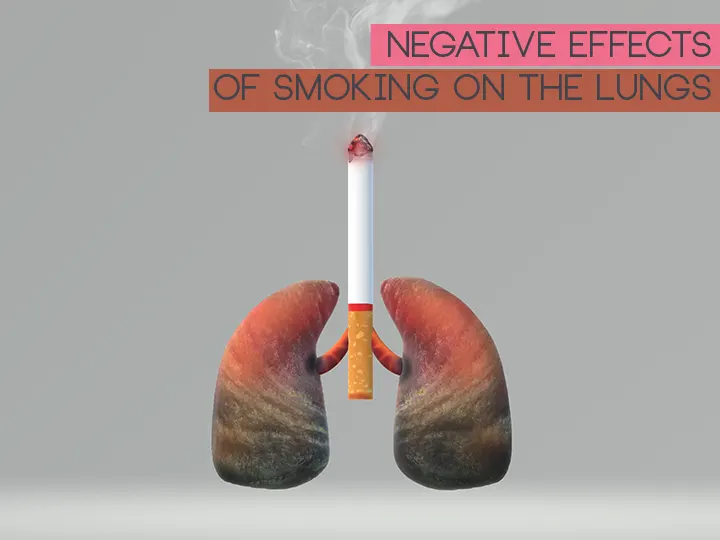
Negative Effects Of Smoking On The Lungs
Smoking is a well-known risk factor for many health problems, including lung damage.
The negative effects of smoking on the lungs can be profound and long-lasting, leading to a range of serious health problems, including chronic obstructive pulmonary disease (COPD), lung cancer, and respiratory infections.
One of the primary ways that smoking damages the lungs is by exposing them to harmful chemicals, including tar, carbon monoxide, and other toxic substances. These chemicals cause damage to the delicate tissues of the lung, leading to a range of health problems, including:
- Chronic Obstructive Pulmonary Disease (COPD): Smoking is the leading cause of COPD, a group of lung diseases that makes it difficult to breathe. COPD can cause permanent lung damage and can be fatal.
- Lung Cancer: Smoking is also a major cause of lung cancer, which is the leading cause of cancer deaths worldwide. In fact, smokers are 15 to 30 times more likely to develop lung cancer than non-smokers.
- Respiratory Infections: Smoking weakens the immune system, making it easier for viruses and bacteria to take hold in the lungs and cause respiratory infections, such as pneumonia and bronchitis.
- Emphysema: Smoking damages the air sacs in the lungs, making it difficult for air to flow in and out of the lungs. This can lead to emphysema, a progressive disease that makes it difficult to breathe.
- Chronic Bronchitis: Smoking can cause chronic bronchitis, a condition in which the airways in the lungs become inflamed and narrowed, making it difficult to breathe.
In addition to the direct damage that smoking causes to the lungs, it can also lead to other health problems that can have a negative impact on lung health, such as heart disease, stroke, and reduced circulation.
In conclusion, the negative effects of smoking on the lungs are well documented and far-reaching. From lung cancer to COPD and respiratory infections, smoking can cause serious and long-lasting damage to the lungs. It is never too late to quit smoking and protect your lung health.
Here are some methods that people use to quit smoking:
- Cold turkey: Quitting smoking suddenly and without any aids or support.
- Nicotine replacement therapy (NRT): Using products like nicotine gum, patches, lozenges, or inhalers to help manage withdrawal symptoms and cravings.
- Medications: Taking prescription medications such as bupropion or varenicline that can help reduce withdrawal symptoms and cravings.
- Counseling or support groups: Talking to a counselor or joining a support group can provide emotional and practical support during the quitting process.
- Cognitive behavioral therapy (CBT): Working with a therapist to identify and change negative thought patterns and behaviors related to smoking.
- Acupuncture: Using traditional acupuncture techniques to help manage withdrawal symptoms and cravings.
- Exercise and physical activity: Regular exercise and physical activity can help manage withdrawal symptoms and reduce stress, which can trigger smoking cravings.
- Healthy eating: Incorporating healthy foods into your diet can help manage withdrawal symptoms and cravings, and provide the nutrients your body needs to heal after quitting smoking.
It is important to note that quitting smoking is a process, and what works for one person may not work for another. It is recommended to speak with a healthcare provider to determine the best approach for your individual situation.